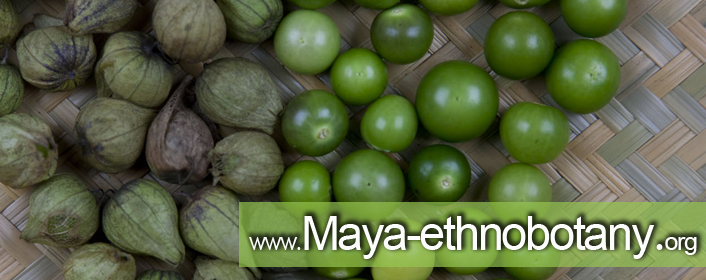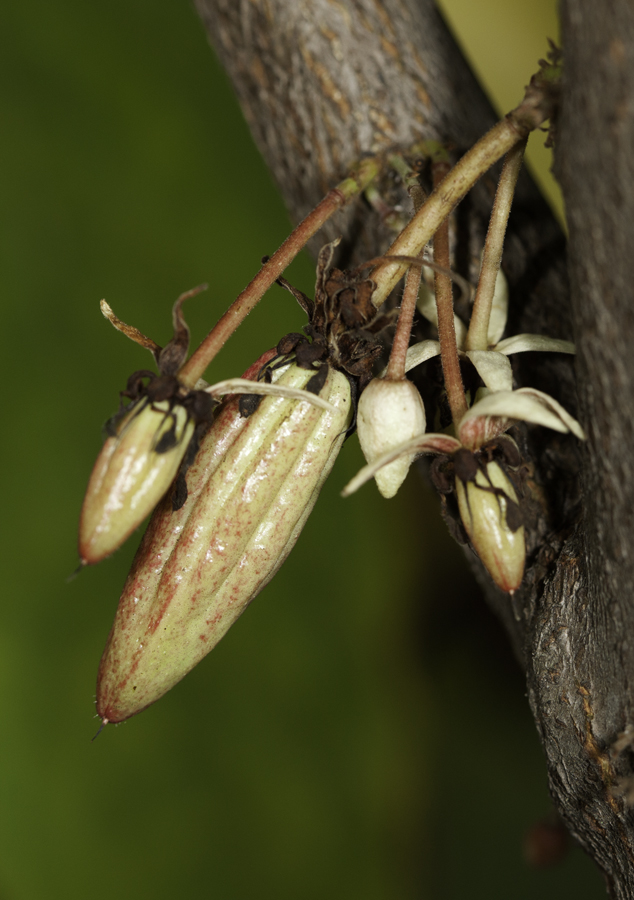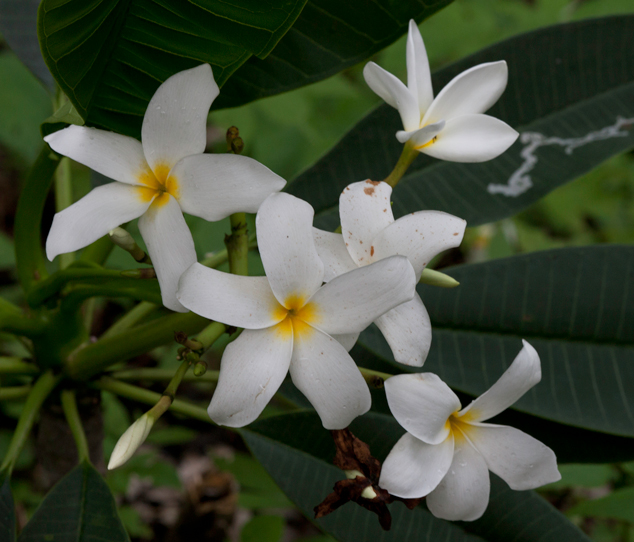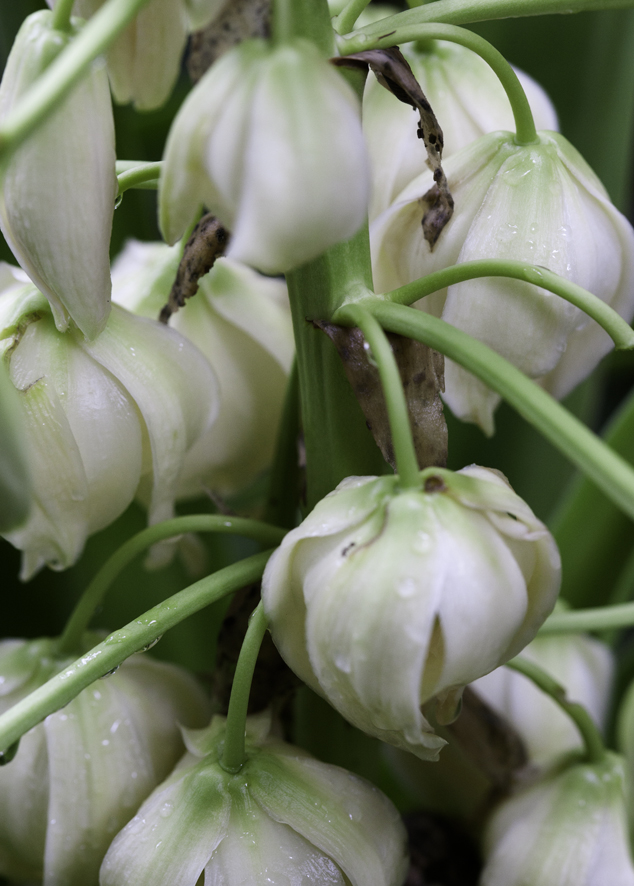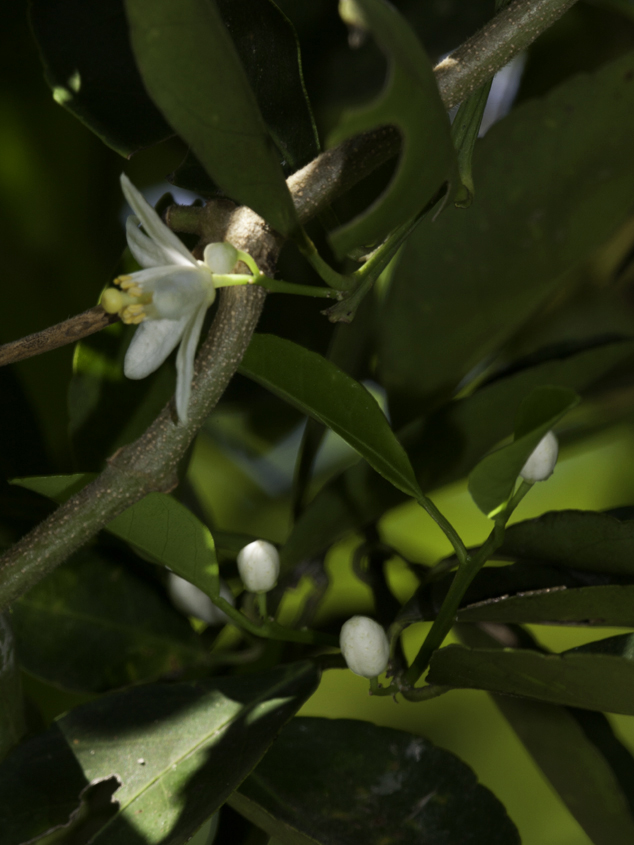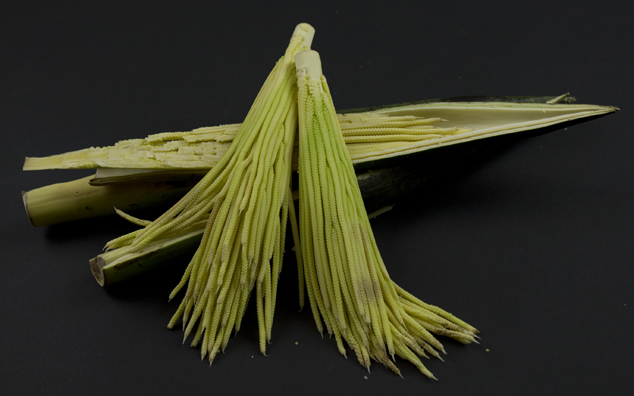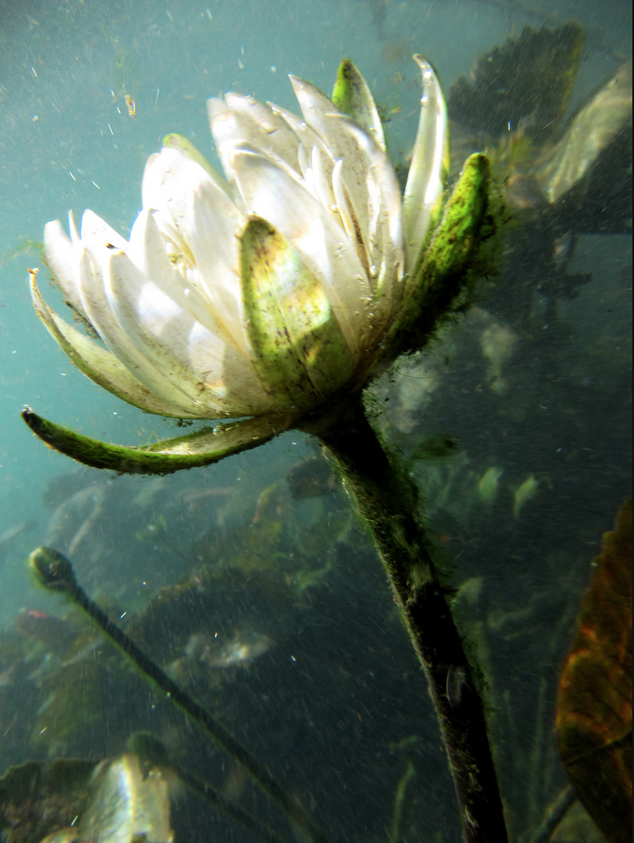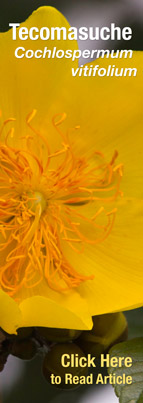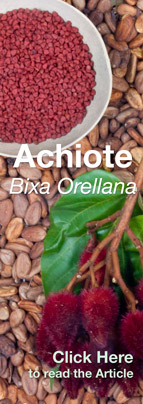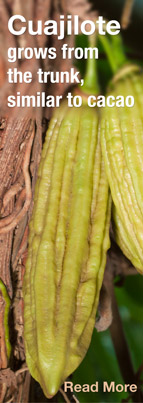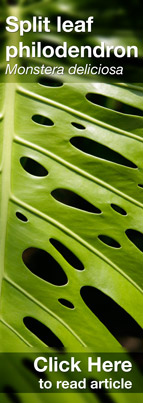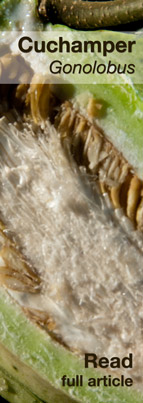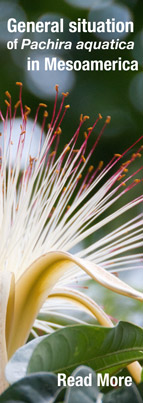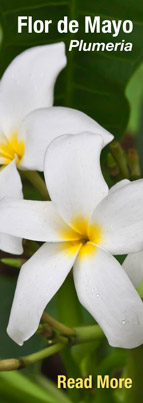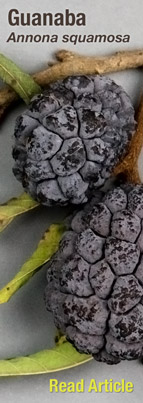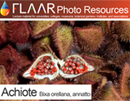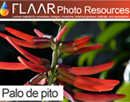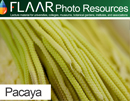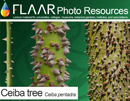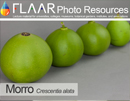When time and funding permit, each flower (each plant species) will have its own page, and its own PDF, and eventually its own PPT so that professors and students have plenty of material on Guatemala (and Honduras, etc) to study.
Heliconia adflexa, Coban, Guatemala, Hotel Monja Blanca, FLAAR, by Nicholas Hellmuth
This space is for flowers
we have recently found and photographed.
|
| Share
|
| Flowers in Maya religion, iconography, hieroglyphs and diet. |
|
Be careful when identifying sacred flowers Stylized flowers are found in Maya murals, on vases, plates and bowls, and as earrings. Unfortunately several of the flowers identified by J. Eric S. Thompson and other Mayanists may be inaccurately identified. The identifications that are most accurate tend to be by Charles Zidar of the Missouri Botanical Garden. At FLAAR we are working on identification of scores of Maya plants, trees and flowers based on detailed long-range study of the actual plants. For example, there is an oft-published vase in the Museo Popol Vuh where the tree is consistently “identified” by iconographers and epigraphers as a cacao tree. No, sorry, it is not a cacao tree. I raise cacao trees, they bloom and fruit in our garden (yes, even at 1500 meters above sea level). I have been studying cacao, and pataxte, for over thirty years, and in detail the last five years. The last three years I have been working on all the other fruits which are superficially similar to the cacao pod (yes, there are many of them). I can show innumerable figurines where a cacao fruit has been identified by a scholar, and then I can show other fruits that are more closely appropriate as a model than a cacao fruit. Sorry, there are many many fruits that are the same size, shape, and form as a cacao pod.
In other words: some trees identified as cacao simply are totally other plants. I spend months out in the forests and swamps studying trees, flowers, vines and their flowers. Using high-resolution 21 megapixel cameras and sophisticated macro lenses we at FLAAR obtain literally hundreds of photographs of each species. It will take us years to publish everything we have found, but this web site, www.maya-ethnography.org, is a start. If we had funding we could publish everything during a two year period. List of some sacred flowers of Maya religion and mythology Flower of zapote bobo, Pachira aquatica. This flower (and the tree) are clearly related to ceiba; the trunks even have a few spines sometimes. Another flower which is similar is on the Pseudobombax ellipticum, named amapola but is obviously not opium. The name in Belize is shaving brush tree (because of the shape of the flower). Flower of ceiba tree, various species. Every botanical book uses different names, such as Ceiba aesculifolia, Pochote. Ironically the largest and most sacred of the ceiba trees, Ceiba pentandra, its flower is not spectacular, but other ceiba species have flowers that are gorgeous. Waterlily, Nymphaea ampla Plumeria species, flor de Mayo, bak nikte’. Read the article on Plumeria
flores del nardo, Polianthes tuberosa. (Schoenhals 1988:206). Also an additive to balche drink of Lacandon. Squash flower(s), related to ballgame Amapola, Pseudobombax ellipticum (shares some features with Pachira aquatica) Edible flowers of Guatemala and Mexico Biznaga colorada, Cactus flowers,Ferocactus pilosus, (Arias 2010) Chayote, Sechium edule (root, flowers, and leaves are edible). Read more 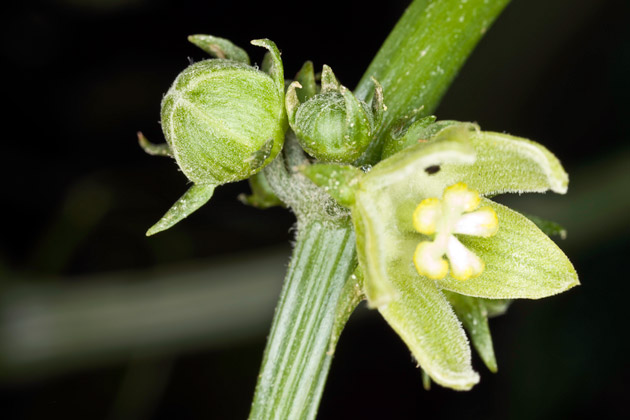
Chayote, Sechium edule flower. Dahlia, Tzoloj, Dahlia imperialis (Chizmar 2009:111-112) Isote tree (also spelled izote), spineless yucca, Yucca elephantipes. We raise izote flowers in our garden. The neighbors come to ask if we can give them part of the harvest so they can eat the flowers. Izote flowers are commonly sold in the local markets also. Read the whole article
Loroco, Fernaldia pandurata. This flower is also commonly found in native markets.
Pacaya, palm, Chamaedorea pacaya. This is my favorite flower to eat.
Squash, some squash flowers may be edible. Many parts of the waterlily, Nymphaea ampla, are edible. This is a flower I do not myself wish to experiment with, though many parts of the water lily were ingested by the Classic Maya. Due to unknown chemical properties we do not recommend eating the flowers or seed pod of the water lily. This list will grow.
Decorative flowers: Additional Flowers to learn about Annatto flower is quite showy, Bixa orellana Acnistus arborescens (Chizmar 2009:297-298) Bucut, Cassia grandis (OFI-CATIE: 439), impressive mass of white-pink flowers on a tree. Ciricote flower, Cordia dodecandra, looks like it would make a beautiful earring. Cuajilote, Candle tree, Parmentiera edulis, ribbed fruit looks vaguely like a thin cacao. Tree is related to morro or jicaro (calabash tree). Cestrum racemosum (Chizmar 2009:302-303). All Cestrum species are of interest. Huele de noche grows outside in front of my office. Chayote, Sechium edule. Clavellina, Pseudobombax ellipticum More photos in this link www.flickr.com/photos/robregon/4612328661/ Clavellina, Bombax palmeri Clavellina is another typical Spanish misnomer in that five (or more) flowers absolutely unrelated to each other have the identical name, Clavellina. One is a cactus! Jicaro, Crescentia alata, and/or Crescentia cujete calabash tree, has a flower that should be compared with scenes in Mayan art. Lacmellea standleyi Mexican Butterfly weed, Blood Flower, Asclepias curassavica Mexican primrose willow, Ludwigia octovalvis Peacock Flower or chaparral in Spanish, Caesalpinia gaumeri Pentalinon andrieuxii Tobacco flowers are very beautiful, Nicotiana tabacum and Nicotiana rustica. But so far I have not yet been able to find indigenous tabacco nor indigenous cotton. However native Maya rubber is common (rubber from Brazil has taken over; Egyptian cotton has replaced native cotton; and commercial tobacco has replaced native Maya tobacco). While on the subject of tobacco, the Maya wrapped their cigars in nance leaves. Also the Maya smoked many other leaves besides tobacco: guarumo is but one additional ingredient. And most smoke that the Maya inhaled came from incense.
Most recently updated August 17, 2011. |
Parque Nacional Yaxha, Nakum and Naranjo
Carnivorous Plants
Plants of Municipio de Livingston, Izabal
- Acrostichum danaeifolium, giant leather ferns
- Bellucia Pentamera
- Bibliography on Grias cauliflora
- Bibliography on Licania platypus
- Bibliography on Mangle negro (Avicennia germinans) L.
- Bibliography on Montriacardia arborescens
- Bibliography on Typha domingensis and Thypha latifolia
- Conocarpus erectus, white mangrove
- Edible Wetlands Plants, Hotel Tortugal
- Heliconia latispatha
- Heliconia wagneriana
- Manicaria saccifera Confra palm
- Neotropical trees of Guatemala need protection
- Nymphoides indica, waterlily flowers
- Pachira aquatica, zapoton
- Bibliography on Pithecellobium Mart., Neotropical trees of Mesoamerica
Ecosystems, Wetlands Aquatic Plants
Smartphone Camera Reviews
Bushes and small trees
Fungi and Lichens
Orchids
- Bibliography Bletia purpurea, aquatic orchid
- Bibliography, Epidendrum radicans
- Bibliography on Habenaria Orchids from Yaxha
- Bibliography, Lycaste virginalis var. alba.
- Bibliography, Macroclinium bicolor
- Bibliography, Prosthechea cochleata
- Bibliography Sobralia macrantha, Lirio de San Juan
- Bibliography, Sobralia xantholeuca
- Bibliography on Terrestrial shade orchids from Guatemala
- Bibliography on Terrestrial sunny orchids from Guatemala
Botanical Terms
Maya and Aztec flavorings for cacao, cocoa, chocolate
- Achiote, Bixa orellana
- Bibliography on Achiote, Bixa orellana
- Bibliography on Esquisúchil, Bourreria huanita
- Bourreria huanita
- Cassia grandis, bucut
- Chile Chocolate
- Chile Chocolate (Capsicum annuum var accuminatum)
- Chiranthodendron pentadactylon
- Cymbopetalum penduliflorum
- Guazuma ulmifolia
- Haematoxylum brasiletto
- Piper auritum, hoja santa
- Piper species
- Quararibea funebris
- Sterculia apetala, castaño
- Tagetes sp., Marigold
- Talauma, a variant of Magnolia
- Vanilla orchid
- Virola and nutmeg
Cacao, cocoa, chocolate
Consulting cacao & Theobroma species
Tobacco Ingredients of Aztec & Maya
Trees of Mesoamerica
- Bibliography on Acacia dolichostachya, Wild tamarind
- Bibliography, Bellucia costaricensis
- Bibliography, Bucida buceras
- Bibliography on Coccoloba belizensis Standl.
- Bibliography on Cojoba sp. and Cojoba arborea
- Bibliography, Ficus.
- Bibliography on Haematoxylum campechianum and H. brasiletto
- Bibliography on Hibiscus pernambucensis
- Bibliography on Ipomea murucoides
- Bibliography on Lacmellea standleyi, lechemiel
- Bibliography on Leucaena leucocephala
- Bibliography on mangle rojo (Rhizophora mangle)
- Bibliography on Manzanillo, Alseis yucatanensis Standl.
- Bibliography on Matilisguate, Tabebuia rosea
- Mangrove swamp Trees
- Bibliography on Ruagea insignis
- Bibliography on Pterocarpus officinalis
Bombacaceae, Bombacoideae
Tropical Fruits of the Maya
- Avocado Hass
- Bibliography on Coloc, Talisia floresii
- Bibliography, Dichogamy of avocado species
- Bibliography on Guayo, Talisia olivaeformis
- Bibliography on Laetia thamnia, Bakelac
- Bibliography on Maracuyá, Passiflora quadrangularis L.
- Bibliography on Punica granatum L., Granada
- Cashew
- Cuajilote, Parmentiera aculeata
- Granada
- Guanabas and Annonas
- Guava, Guayaba, Psidium guajava L
- Introduction to Papaya
- Nance a fruit of prehispanic Guatemala
- Passion flowers and fruits
- Passion flower, giant fruit
- Talisia floresii, Sapindaceae
- Carica Papaya Bibliography
Tropical Nuts
Spices, condiments, food coloring
Medicinal Plants
- Aristolochia, The largest flower in Guatemala, Bibliography
- Asclepias curassavica, bibliography
- Bibliography on Ciricote, Cordia dodecandra
- Bibliography on Contrahierba, Dorstenia contrajerva
- Bibliography on Falso hibisco, Malvaviscus arboreus
- Bibliography on Huele de noche, Cestrum nocturnum
- Bibliography on Lirio araña, Hymenocallis littoralis
- Bibliography on Roble Prieto, Ehretia tinifolia
- Bibliography, Tithonia diversifolia
- Canak
- Calliandra general info
- Guava, Guayaba
- Magnolia and Taluma
- Mayan medicinal plants
- Piper
- Tecomasuche, Coclospermum vitifolium
- Bibliography on Sufricay, Malmea depressa
- Bibliography on Wigandia urens
Underutilized edible plants
Edible Plants of the Mayan World
- Acacia, subin, bullhorn acacia
- Bibliography, Annona muricata
- Bibliography, Annona purpurea
- Bibliography, Annona reticulata
- Bibliography on Chipilín, Crotalaria longirostrata
- Bibliography on Chirimoya, Annona squamosa
- Bernoullia flammea
- Canna indica, tamale wrap
- Cuchamper, Gonolobus
- Guava, Guayaba
- Bibliography, Gonobolus sp.
- Bibliography, Parmentiera aculeata
- Pacaya palm Chamaedorea tepejilote
- Split leaf philodendron, Monstera deliciosa
Plants and trees used to produce incense
Utilitarian Plants
- Bibliography, Acacia farnesiana
- Bibliography on Aechmea bromeliifolia
- Bibliography on Agave americana
- Bibliography, native Agave species from Guatemala
- Bibliography on Anthurium crassinervium (Jacq.) Schott
- Bibliography on Balsa, Ochroma pyramidale
- Bibliography on Bamboo, Guadua longifolia (E.Fourn) R.W.Pohl
- Bibliography, Crescentia alata
- Bibliography, Crescentia cujete
- Bibliography on Hule, Castilla elastica
- Blepharidium guatemalense, irayol blanco
- Crescentia alata, Crescentia cujete
- Tecomasuche, Coclospermum vitifolium
- Bibliography on Coxte, Colubrina arborescens
- Bibliography on Madre cacao, Gliricidia sepium
- Bibliography on Tillandsia usneoides
Flowers, edible
Camera Reviews for Photographing Flowers and Plants
Toxic plants
Trees with conical Spines
Flowers native to Guatemala visible now around the world
SUBJECTS TO BE COVERED DURING NEXT 6 MONTHS
Grains
Fruits (typical misnomer mishmash of Spanish language)
Other Fruits (primarily fruits from trees)
Fruits (vines or cacti)
Flavoring, herbs, and spices
Flowers, sacred
Plants which are sacred
Plants mentioned in myths
plants to produce Alcohol
Plants used for drugs
Plants or trees that are used to produce incense
Most common introduced plants (not native)
Glossaries

